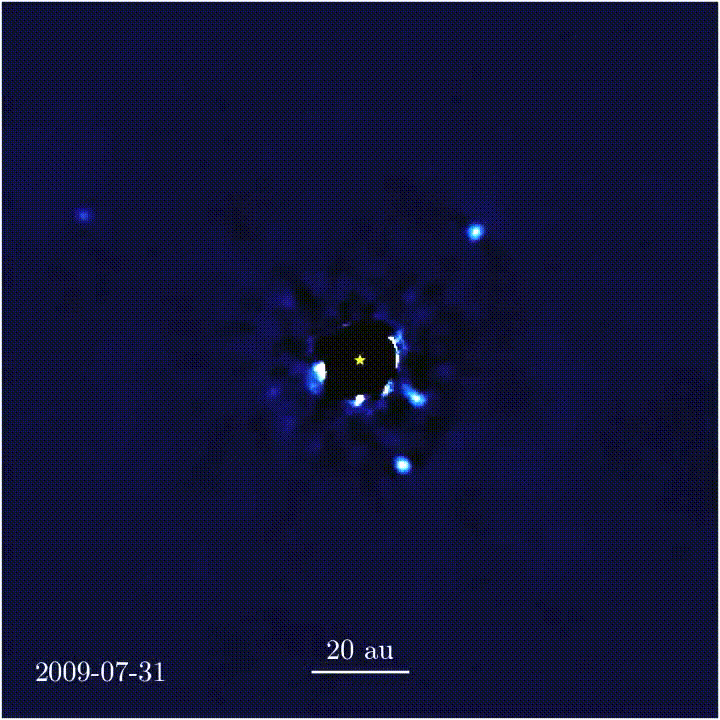Exoplanetary Solar System Visualized

Watching planets orbit a new star (credit: NASA Exoplanet Explorations)
For the first time, multiple planets orbiting another star has been visualized in motion around their Sun. An animation was created from repeated photographic observations captured over a period of seven years. It shows the planets in extending orbits away from a young star, designated HR-8799. The 4-planet system is still developing around its star from a surrounding cloud of gas and dust. The exoplanets all have circular orbits.
According to NASA:
The four planets are more massive than Jupiter. The visualization is a composite of images taken over the 7-year period at the Keck Observatory on Mauna Kea in Hawai'i. The animation doesn’t show full orbits as the closest-in planet circles the star every ~40 years while the furthest takes more than 400 years for a complete circuit. Researchers at the University of California think the four planets are in resonance with each other. In this case, it is a one-two-four-eight resonance, meaning that each planet has an orbital period in nearly precise ratio with the others in the system. The new star and solar system is 129 light-years away in Pegasus (constellation) close to another star (51-Pegasi) where the first exoplanet was originally detected in 1995. HR-8799 is less than 60 million years old and is almost five times brighter than our Sun.
This is impressive space science results and a terrific big data visualization. WHB